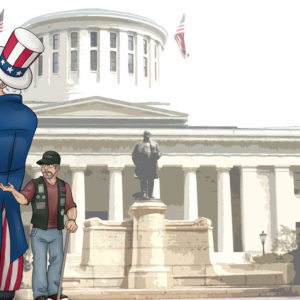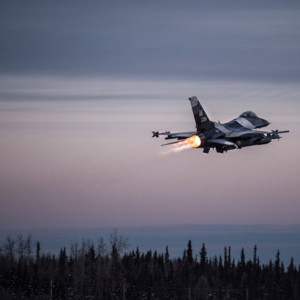Detective Lavalley and the Leather Map Case
By Jim Lavalley
When I was given a medium sized rectangular satchel to review, I instantly recognized it as a map case. It was obviously designed to ensure that folded map sheets, assorted writing tools, and documents that normally accommodate a uniformed traveler would be protected from the elements. The edges of the case bore evidence of wear from previous use. The cosmetic damage to the thick, very sturdy leather was limited to superficial buffing of the brownish tan outer varnish, giving it an authentic vintage look that would match perfectly with a well-worn leather bomber jacket. I found out later that I had assumed correctly that it was probably from a military era prior to my Army career. It was of a type I might have seen in an old movie, and the slightly musty odor of leather stored for a long time in a warehouse caused me to believe it was of US military issue, probably around WWII or the Korean Conflict. On that account I was wrong.
As I usually do when examining objects for articles, I noted the features and took some measurements. The overall dimensions of this particular map case were 81/2”x 113/4”, meaning the interior would be smaller. This caused me to scratch my head. American letter paper size is 81/2”x 11.” This case probably wasn’t American. I confirmed that fact when I tried putting some of my printer paper inside. It was too wide to fit inside interior document pocket without some folding. After doing a little research, I found that this particular map case was Hungarian, employed sometime during the Soviet occupation of that country. It was designed to hold European standard paper sizes (A4 and A5 in this case), which are slightly smaller than their American counterparts.
With two exceptions, the entire case was made from heavy-stitched leather with metal hardware. There was a metal-tipped securing strap on the front that would hold the cover closed when routed through an interior metal hasp. The hasp was designed to be pushed through one of two metal-reinforced slots, depending on the size of the contents of the case: a fastener that predates modern hook-and-loop closures. The outer case folded from the top, securing an inner leather folder.
The interior folder folded from left to right with clear plastic for protecting map sheets inside and an internal securing strap on the lower left. The previously-noted interior pocket was formed by back of the case and the attached interior folder. The heavy clear plastic was protected by a fabric divider, an impressive feature that had kept the plastic clear and scratch-free, even after apparent years of use and storage. On the outside panel of the inner folder were two pockets. The top pocket, for pens, pencils, and the like, was 3 ¼” x 4 ¼” and featured a button down fastener. The lower, wider pocket was 7 ½” x 3 ¼” and could be secured with two leather tabs. Finally the back of the case had two short straps with metal snap hooks. My map case was missing the two shoulder straps I noticed were common during my research. That didn’t diminish its usefulness for me, though. The case would secure itself to just about any vehicle or backpack, and it would easily attach itself to any of the dozen spare straps I have laying around the house.
As an accessory, I believe this map case would work best for what it was designed to do. Sometimes there is simply no substitute for paper maps when it comes to terrain association and tactical planning; you can’t write on a GPS, after all. It certainly would be appropriate for the traveler who is going to Europe and plans to do some touring and hiking. Besides maps, this kind of case would be useful for documents or photos of 8” x 10” or smaller. It would definitely suit a photographer needing to transport school prints, a sketch artist, a student, or actors and models for use as a handy backup portfolio. Marketers and activists could use it to carry flyers for distribution. Shooters heading out to the range would find that a fair number of targets fit neatly inside.
For around $11.00-15.00, you just can’t beat a military surplus item like a map case. It’s useful, versatile, and just plain looks great.



